Test Drive Ford Escape since 2012 SUV
Comparative Test: Ford Escape against Honda CR-V
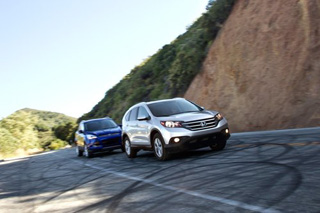 Fast facts
Fast facts First place: Honda CR-V
Despite the minimum innovation, the new CR-V remains invariably practical and economical family crossover.
Second place: Ford Escape *
SUV, which you would prefer to manage, is not always the one that you would prefer to buy.
* Ford Escape Third Generation, which is discussed in this article, will be sold in the Russian market as Ford Kuga.
It's time to admit: In America, a war rages for the possession of the title of the best diapers.
When you pay four dollars per gallon of gasoline (3.75 liters) has become the same common business as a large family, many keepers of the home focus stop their choice on crossovers. It does not matter whether it is about the stroller and the nursery or a simple movement around the city, compact crossovers often take over the average sized sedans due to their unpretentiousness in terms of weather conditions, the ability to transport sufficiently large amounts of cargo and excellent visibility. Since 2008, sales in the Compact SUV segment in the United States are invariably, Ford Escape and Honda CR-V are invariably.
So if you need to carry diapers, and you want to buy a new car for this, the simultaneous release of both updated models plays a huge role. Despite the common goal, ways to achieve it from Ford Escape and Honda CR-V are completely different. What approach is better? This we will find out.
Different strategies, one mission
The Ford Strategy for Escape includes the ability to choose one of three four-cylinder engines, two of which are equipped with direct injection and turbocharged, and one ordinary atmospheric, and one transmission is proposed. Six-speed automatic. All of them lead the front axle, four-wheel drive is an option. The Escape who arrived at the test was turned out to be a top-end titanium bundle with a full drive, which is standard when choosing the most powerful motor, turbocharged 2-liter (231 hp and 366 nm).
Honda CR-V adheres to a more traditional scheme. In the US, only one engine is available for a 2.4-liter unit with four cylinders, which develops 185 hp. and 221 nm of torque. Everything is very common: an atmospheric motor, a five-speed automatic transmission transmitting torque on the front wheels. Four-wheel drive can be ordered with any embodiment of the cabin, and, in accordance with the traditional pricing policy for Honda, the second possible option is the navigation system.
We tested top configuration of both machines. In the case of Escape, this means plus $ 3,185 to the base value of the richest titanium package for $ 32,945, which ultimately gives us $ 36,130. For CR-V, this scheme is not applicable, so that our EX-L with the navigation system will cost $ 30,825.
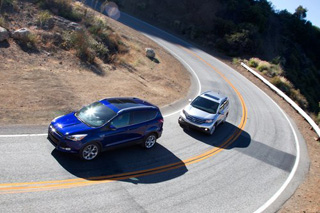 Measure
Measure When comparing the sizes of these SUV it becomes obvious that they have one target audience. The total length of the body differs only by 5 mm, while Ford Escape is wider than the opponent for 2 cm and above 3 cm. Its wheelbase is as longer than that of Honda CR-V: 2,690 mm against 2,619 mm, respectively.
When you get inside, Honda presents a surprise, since his salon is spacious with smaller external dimensions. In part, due to the high lines of the waist Escape and its high-end roof line, which look great, but at the same time they negatively affect the volume of the cabin. In addition to the additional space, the robust CR-V boasts here it is especially nothing.
Speaking about the adaptation of the salon, the denying laws of physics interior CR-V as much better copes with the installation of a deployed children's chair, which usually occupies a terribly much place. If the driver's seat Escape is to be installed in such a way that in it with comfort, the driver is in 175 cm in it, the back of its seat is almost resting in a children's chair. The CR-V also has some space between them.
A quick look at the luggage compartments of these SUV hints at what is official confirmation due to SAE data (automotive engineers society): Honda is the best in this pair, when it comes to the transportation of baggage. Despite the fact that Honda's capacity is most of all 82 liters, its trunk is better in all respects. If you fold the rear seats, the advantage is still at the Japanese: 1928 against 2008 liters.
By the way, to fold these very seats in Honda is not an example easier. This can be done by opening the trunk and pulling the special handle that is from both sides. Folded Escape seats form an absolutely flat loading platform, but this is not enough to beat Honda in terms of capacity. The height of the cargo site for both test participants is approximately the same, 68.5 cm from the ground at the CR-V and 70 cm in Escape.
Sit down the wheel and looked around
From the inside Ford looks more modern than the updated, but still familiar to all Honda. The driver's seat is equally convenient in both cars, but in the case of the CR-V you feel much freer. Many of the test participants noted the spacing Honda, while the other limitations of space in Escape.
When it comes to accommodation in the cabin seats for storing the mass of the little things, Honda also remains unsurpassed. Surprisingly a lot of space we found in a niche on the central console, which is long equal to the length of the base of the front seats, and in the depth of their height. Behind the perfectly smooth floor, whereas in Ford all spoils the protrusion in the center of the cabin.
Ford manages a little to play its position by deflectors of the climate control system located in the center of the cabin, which will undoubtedly appreciate the passengers in the rear seat of the machine.
In the cabin
We did not lose sight of the fact that the interior of Escape is literally shot by a large number of technological innovations, and the Honda CR-V designers do not bother at all in terms of updating the cabin, which looks outdated.
In both SUV there is a two-zone climate control, heating the front seats, the navigation system with the output of the information on the road movement, the rear view camera and the rooftop hatch. Escape, besides the above mentioned above, there is an independent parking function, an interference detection system in the blind zone, an accessory of access to the salon and engine launch without key, xenon optics and 19-inch wheels (CR-V only 17 inches).
The fifth Escape door equipped with an electric shift opens with a keychain, using the button on the door itself or your own leg, which you need to put under the rear bumper (while the keychain from the car should be in your pocket). Undoubtedly a very useful feature for mothers whose hands are constantly engaged in children or shopping.
It is also worth noting that the MyFord Touch system connecting the onboard computer your phone, climate control and navigation system, does not use these immensely annoying buttons that the Elder Brother Explorer has.
Both SUVs are easily synchronized with the smartphone, which we are reminded every time when landing into the salon.
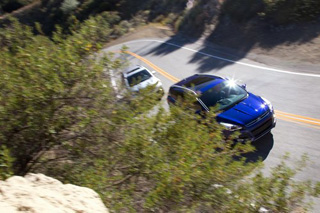 Mom, come on
Mom, come on It is worth noting that Ford Escape, being almost the same size with Honda CR-V, heavier is 163 kg. This is a big difference for compact SUV, although the Escape is an order of magnitude higher than that of CR-V.
It is mainly due to a significant advantage in power, although the length of the transmission is played and the transmission calibration. The fourth and fifth transmission in the CR-V elevated, and it often goes to one of them, which has a positive effect on fuel consumption. Perhaps such a thrust to switch up we did not meet since the GMC Terrain was tested.
Escape, having additional transmission and significant advantage in the torque, if necessary, sharply accelerate never falls. He just does what they want from him. Also, Escape slows down with the help of the engine, much more efficient than the CR-V, which may seem a dubious advantage until it is necessary to overcome the steep descent. What more can be said? If we had to tow a small trailer, Escape would deal with weighing up to 1,500 kg, while Honda would have mastered only 680 kg. Overnight comments.
When it comes to pure acceleration, Escape leaves the CR-V far behind. Speed \u200b\u200b60 miles / hour (96 km / h) Ford is dialing in 7.4 seconds, CR-V spends 9.4 seconds to it. Escape quoter passes in 15.5 seconds, reaching 140 km / h at the finish, and this is 1.3 seconds and 7 km / h faster than Honda (16.8 s and 133 km / h, respectively).
Both SUVs use an electric steering amplifier, but the transfer number in Ford is despite, which positively affects its responsiveness in comparison with the opponent. Tests on handling, too, in favor of Ford, did not surprise us, because it has more precisely reaction. With lateral acceleration, it develops 0.82g, which is much better than the result of CR-V 0.76G. The slalom Ford turned out to be more than 99.7 versus 97.6 km / h. For a complete stop with a speed of 96 km / h Ford, 37.8 meters are required, it is less than a meter less than CR-V.
Question of economy
You may have once heard something that free cheese is found only in a mousetrap. It never happened more true than in relation to the search for a compromise between the capacity and the economy with which we encountered in this case. In accordance with the EPA data, the consumption of Escape (13.4 l / 100 km of running around the city and 10.1 liters on the highway) turned out to be slightly higher than that of the CR-V with its 12.8 and 9.4 liters per hundred, respectively.
Now forget about it, because in the real world, where the responsive turbocharged Escape engine gives you 145 nm more than the Honda motor, the consumption will be a value of non-permanent. At least we succeeded exactly.
For 2 137 km of mixed mode on Ford Escape, we received a consumption of 13.8 liters per 100 km. In identical conditions with the same CR-V drivers spent on average 10.2 liters per hundred per 2,46 km mileage. This difference is very difficult to ignore.
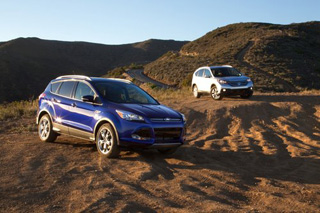 Undoubtedly, the advantage of a 231-strong Ford with his responsiveness and speed will allow you to get a lot of pleasure from travel. But such abilities are unlikely to play a decisive role when choosing a family car. At the head of the list, in such cases, it is usually worthwhile. Most likely, it is for this reason that Ford offers two less voracious motors for Escape, including a 1.6-liter EcoBoost engine, which, presumably, will lead in sales. Of course, with this small 173-strong Escape motor will not be so dynamic, but its consumption will be within Honda CR-V, and in some cases even better. And yet, in the context of our test, there was an outsider in the economy of Escape.
Undoubtedly, the advantage of a 231-strong Ford with his responsiveness and speed will allow you to get a lot of pleasure from travel. But such abilities are unlikely to play a decisive role when choosing a family car. At the head of the list, in such cases, it is usually worthwhile. Most likely, it is for this reason that Ford offers two less voracious motors for Escape, including a 1.6-liter EcoBoost engine, which, presumably, will lead in sales. Of course, with this small 173-strong Escape motor will not be so dynamic, but its consumption will be within Honda CR-V, and in some cases even better. And yet, in the context of our test, there was an outsider in the economy of Escape. Foundation
So, there are two very different crossover from each other, one of which is determined by the fact that its motor can, the second because its motor is not available. With sufficient power, modern flexible transmission and excellent handling, Ford Escape is undoubtedly much more pleasant in management. The level of equipment also highlights it from the crowd, let it have to pay extra for it. But in the end, all these advantages did not lead Ford to victory over the opponent.
It is possible that be Escape with a more compact 1.6-liter ECOBOOST engine, the result would be different, but it would be a completely different test.
Not dynamics and not functionality attract the attention of most buyers to cars of this segment. And it is extremely difficult for us to find any more arguments to make a choice in favor of CR-V, and not Escape. Efficiency and practicality are selling compact SUV, and just Honda CR-V is the perfect combination of one with another. Yes, CR-V did not make any breakthrough in its class, but it offers that first of all attracts buyers to the compact SUV segment, namely: the combination of economy and spacious salon.
So if the family is for you the main value, then Honda CR-V is your car.
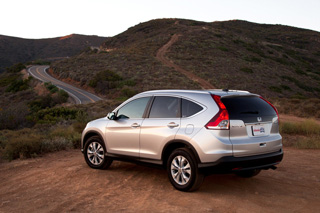
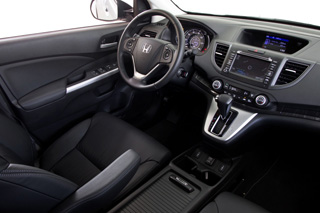
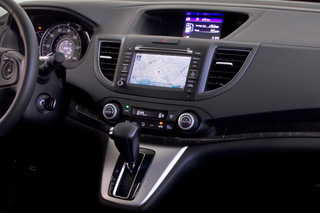
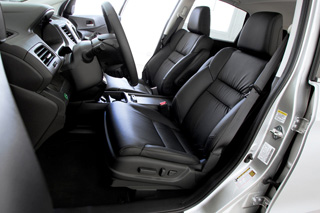
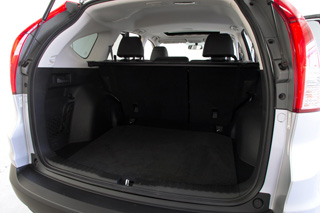
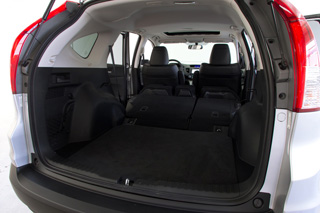
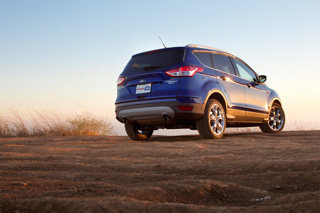


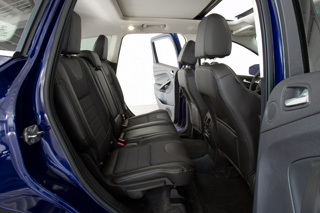
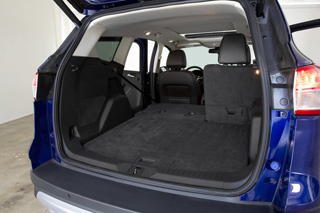
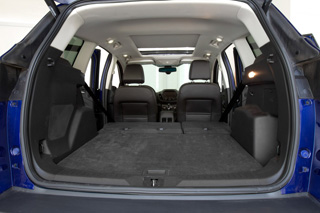
A source: Insideline.



.jpg)




